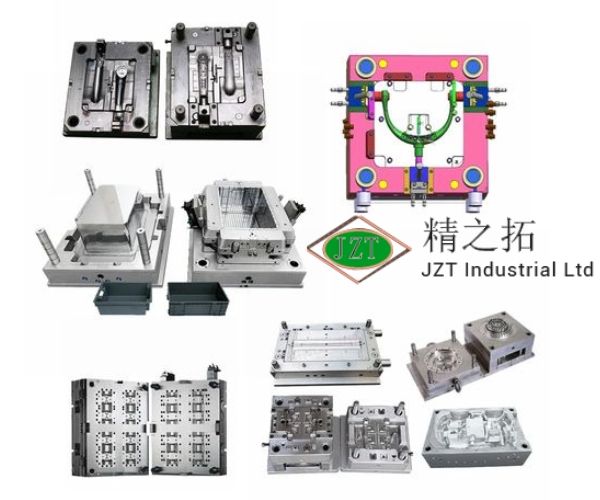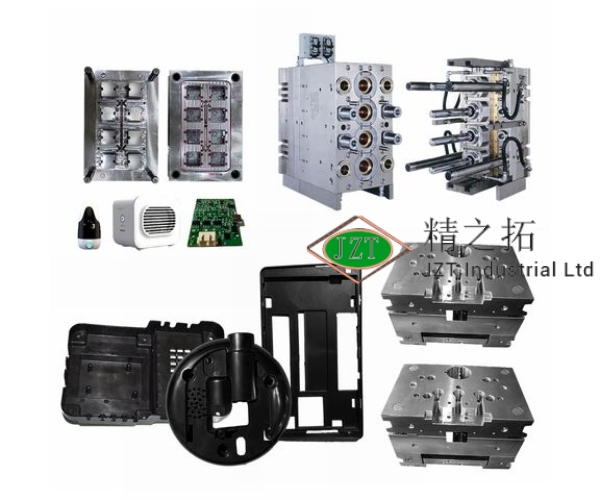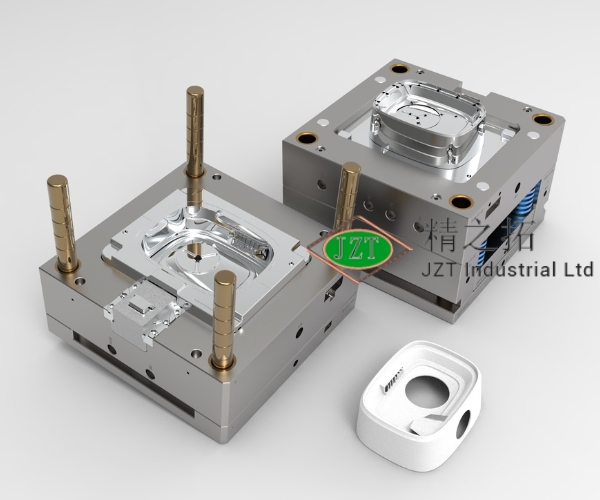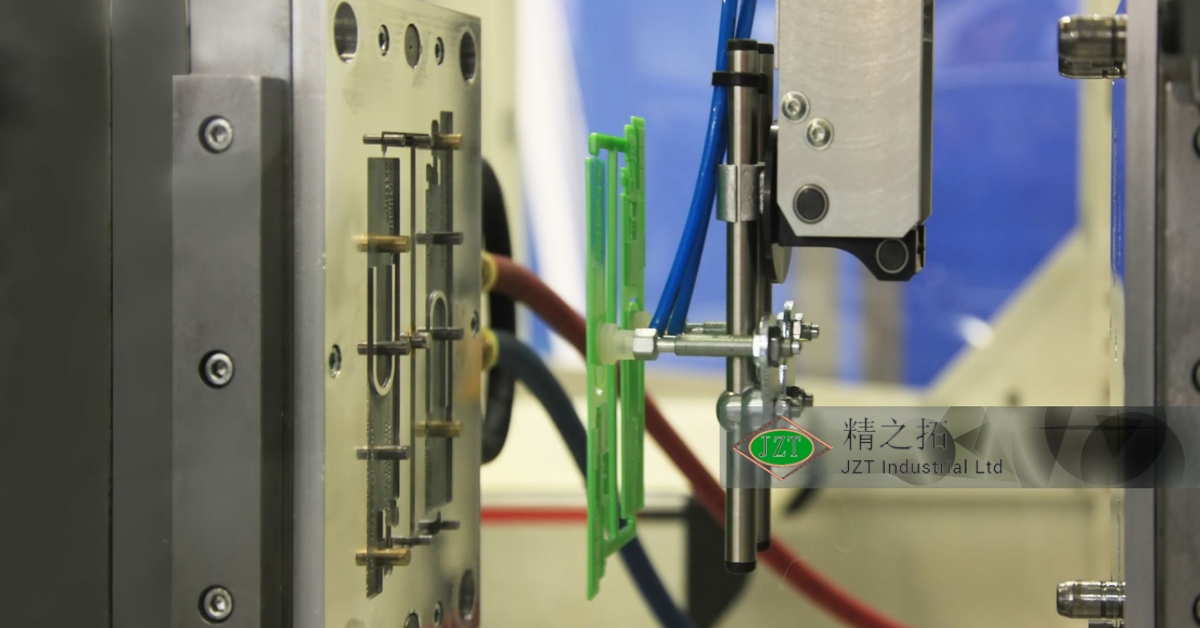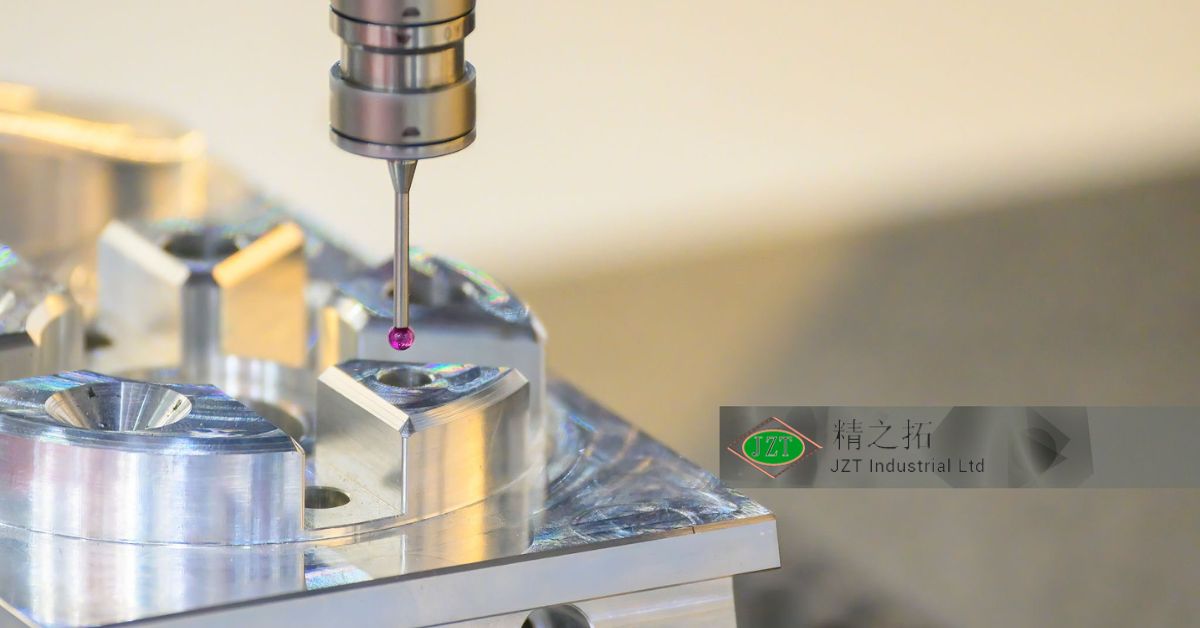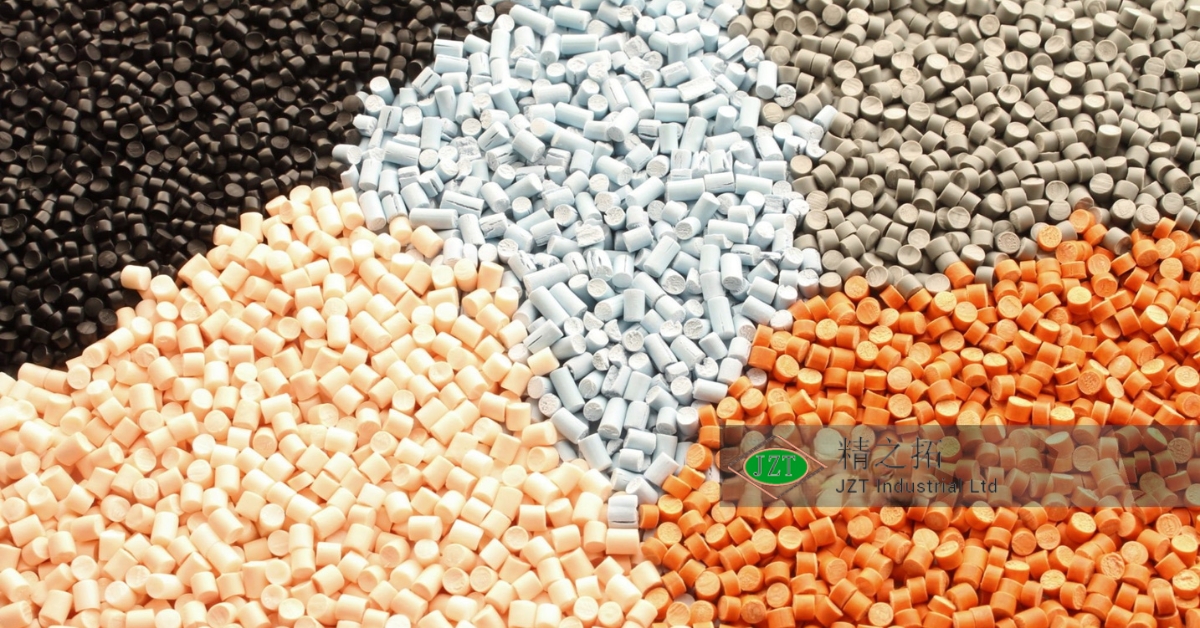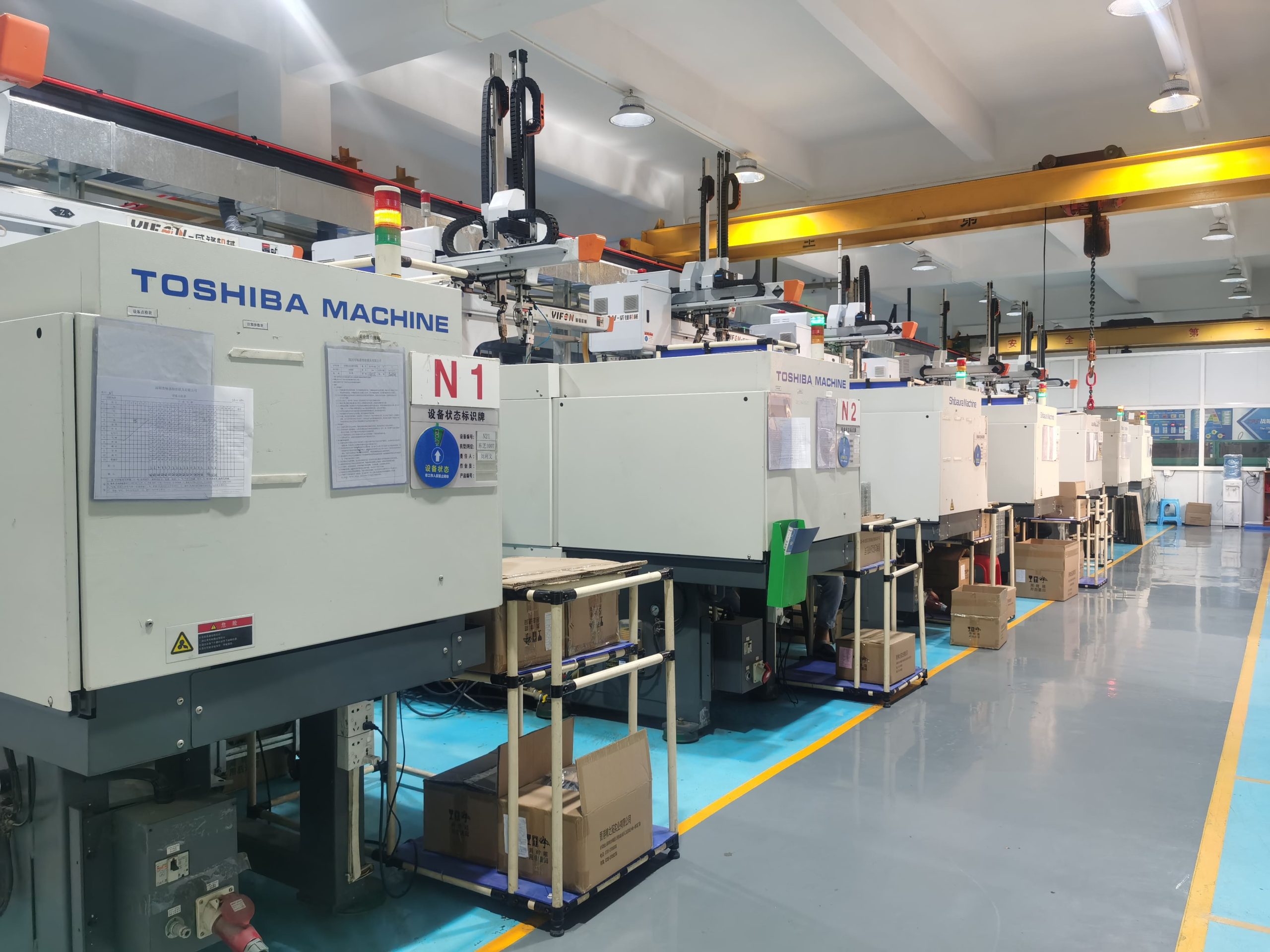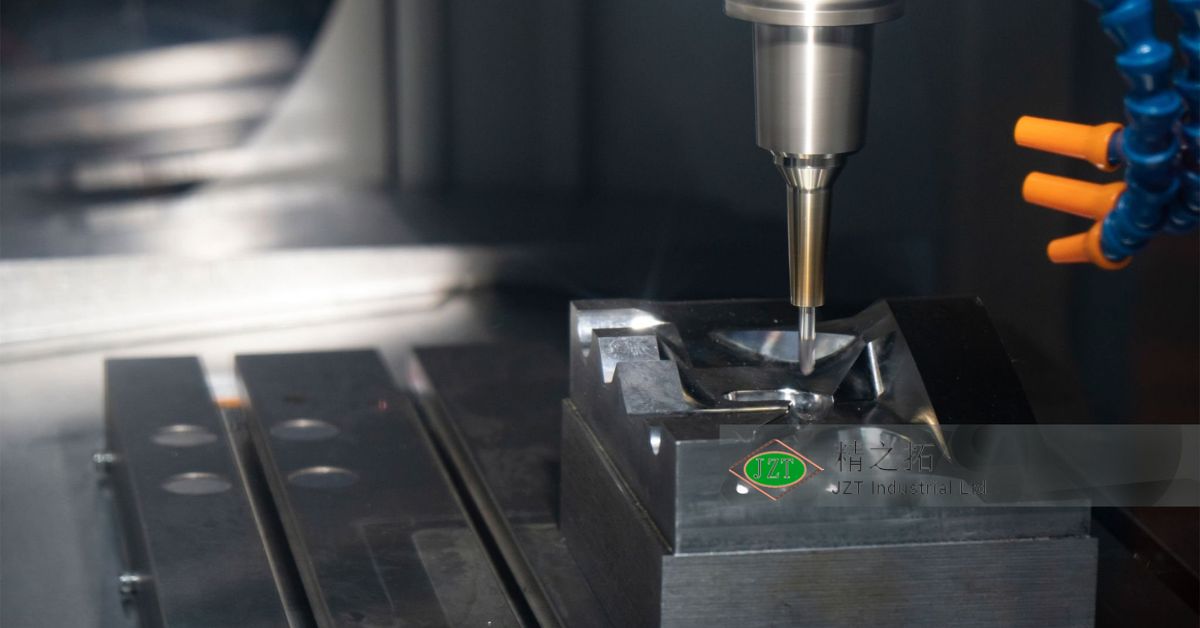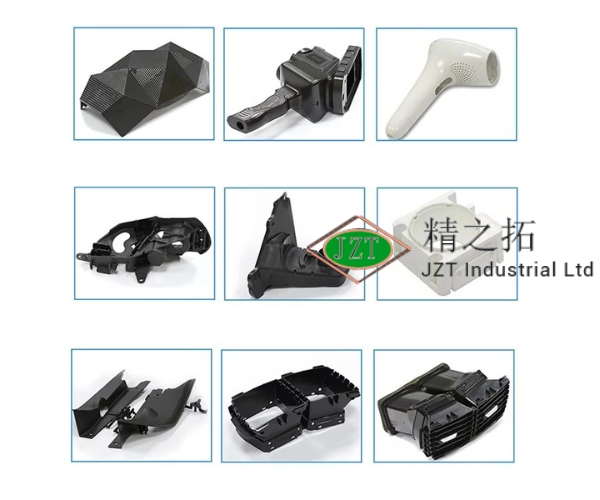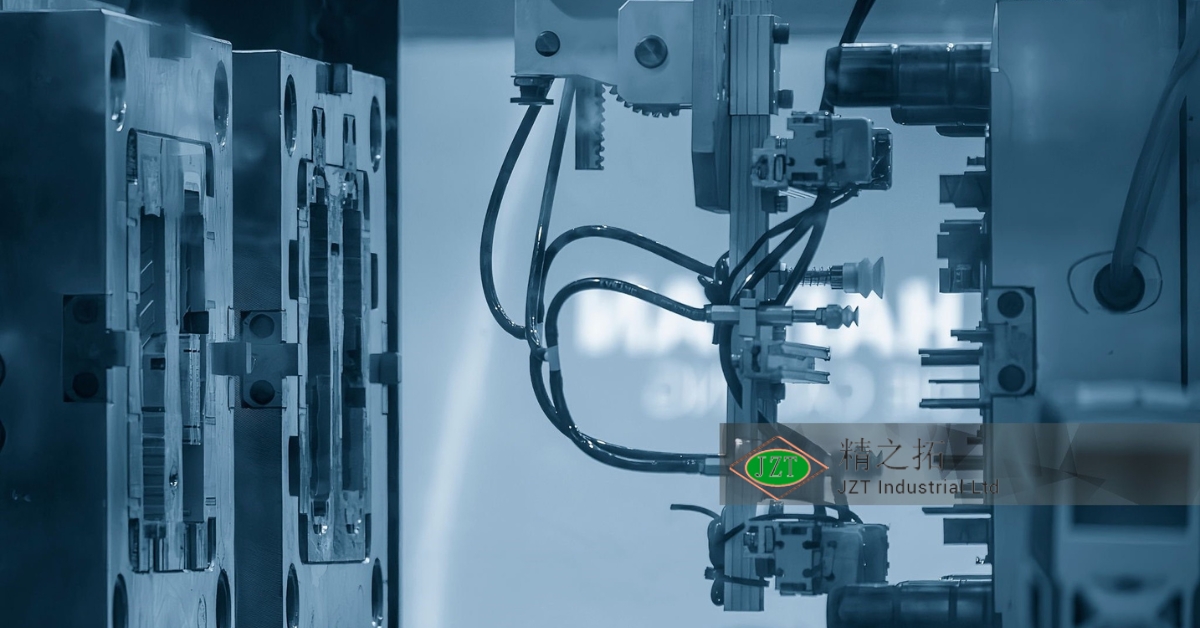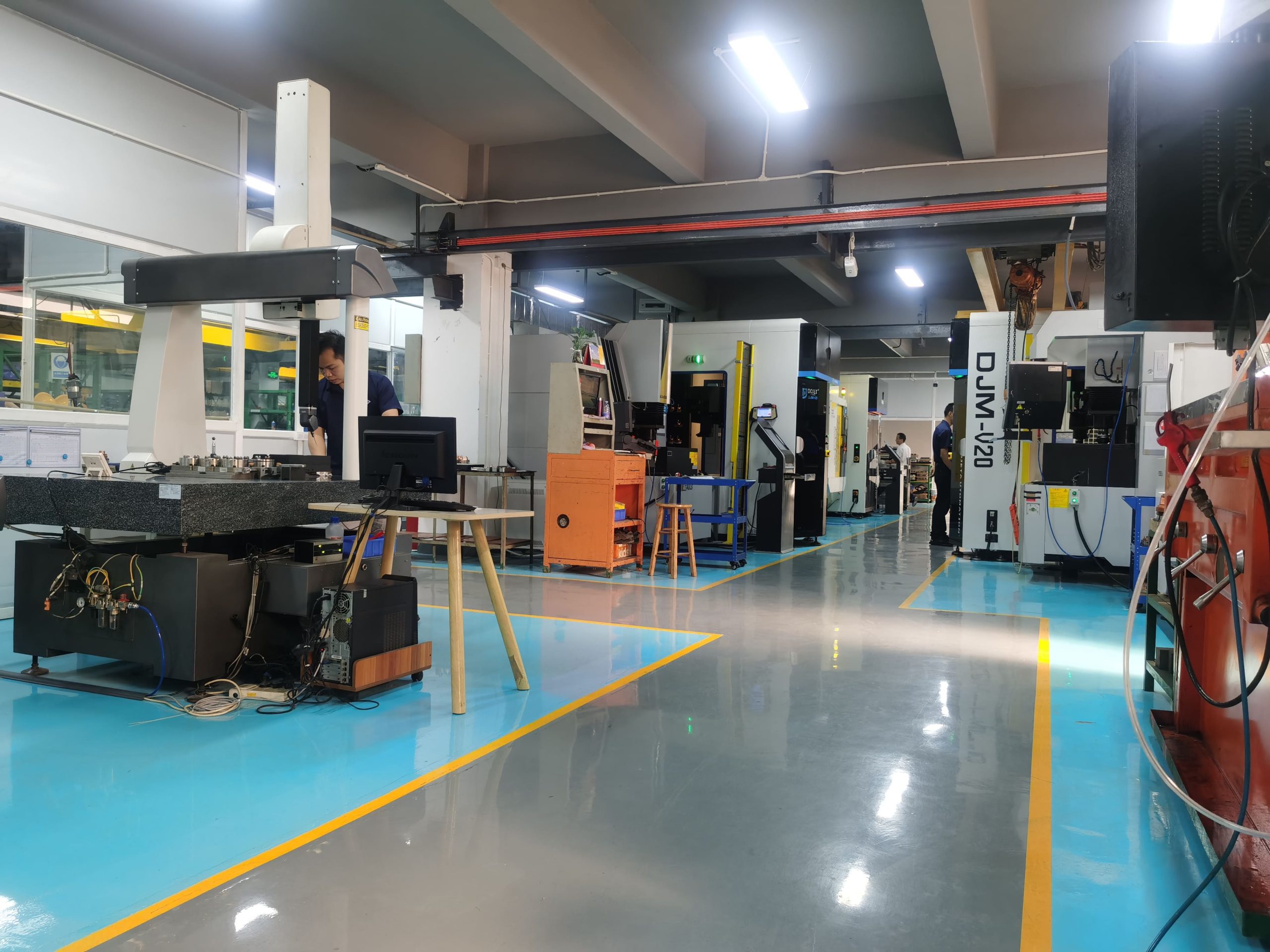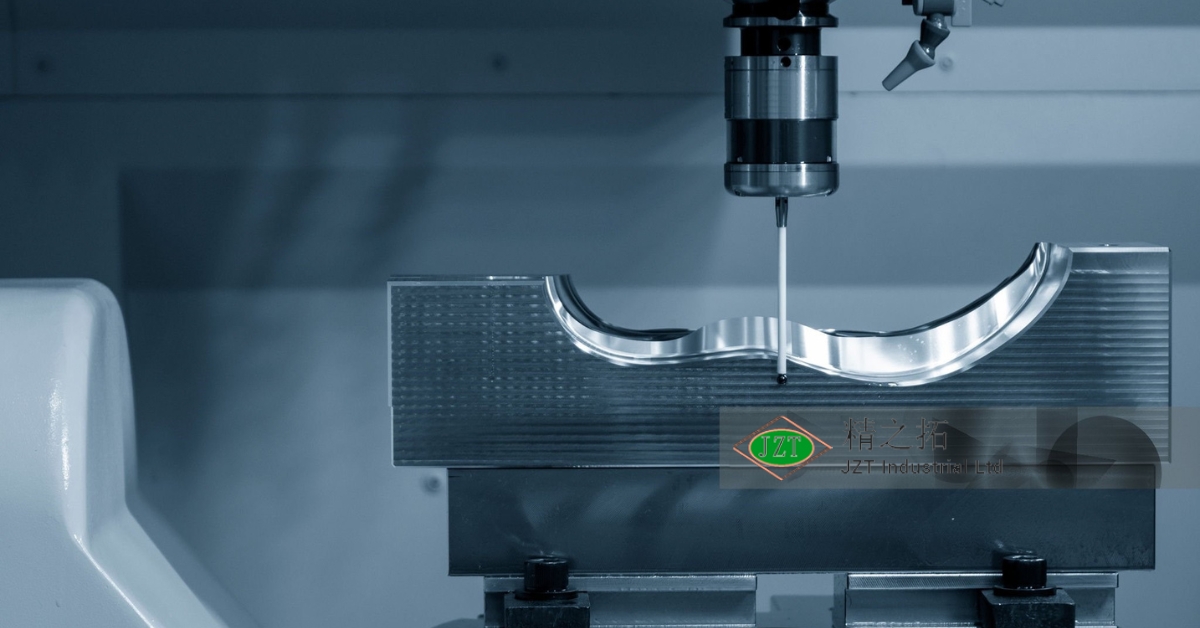소개
Reducing manufacturing costs in plastic injection molding is a primary goal for manufacturers looking to increase profitability and remain competitive. In industries where plastic injection molds are integral to mass production—such as automotive, medical devices, and consumer electronics—implementing efficient production methods can lead to substantial cost savings. The ability to produce high-quality custom plastic parts at reduced costs enables manufacturers to meet customer demands for affordability without compromising on quality.
This guide explores multiple strategies to help manufacturers reduce production costs through efficient plastic injection molding. We’ll cover the cost drivers in injection molding, how design optimizations and material selection influence expenses, and various ways to streamline the injection molding process. Additionally, we’ll discuss how automation and energy management can further enhance cost efficiency. For businesses aiming to balance quality with affordability, these insights provide a roadmap to achieve cost-effective injection molding practices.
Section 1: Understanding Cost Drivers in Plastic Injection Molding
Overview of Major Cost Factors in Injection Molding
In plastic injection molding, the major cost factors include materials, machine operation, labor, mold design complexity, and maintenance. Each of these elements contributes to the overall cost structure, and even minor adjustments can lead to significant savings. Material costs often account for a large portion of expenses, especially if using high-grade polymers or engineering-grade resins. Machine operation costs encompass energy consumption and maintenance, both of which increase with extended production runs and higher cycle times.
Labor costs in plastic injection molding are determined by the level of expertise required for tasks like machine operation, mold changes, and quality inspections. When producing custom plastic parts with intricate features, the need for skilled labor and precise quality control can drive up expenses. Maintenance costs also factor in, especially as molds wear down over time or require regular cleaning and inspections to maintain part quality. By understanding these cost drivers, manufacturers can take targeted steps to reduce unnecessary expenses and improve efficiency across the production cycle.
How Design Complexity Affects Costs
Design complexity has a direct impact on manufacturing costs in plastic injection molding. Parts with complex geometries, intricate details, or tight tolerances often require more advanced molds, longer production times, and higher levels of precision. Features like undercuts, deep cavities, or fine details can add to mold complexity, requiring multi-cavity molds or molds with additional side actions, which are more costly to produce and maintain. Additionally, complex parts may require slower injection speeds or longer cooling times, increasing cycle times and overall production costs.
To reduce costs, manufacturers should prioritize simplifying part designs without compromising functionality. This can involve eliminating unnecessary features, using standardized shapes, and reducing the need for tight tolerances wherever possible. For parts that must have specific features, alternative design solutions, such as incorporating ribbing instead of thicker walls for strength, can help reduce material usage and cycle time. By simplifying designs and minimizing mold complexity, businesses can lower production expenses while maintaining quality standards.
Material Selection and Its Impact on Cost
Material selection plays a crucial role in determining production costs, as different resins and additives come with varying price points and performance characteristics. High-performance resins, such as polycarbonate or polyether ether ketone (PEEK), are generally more expensive than standard plastics like polypropylene or polyethylene. Choosing the appropriate material for each part can help balance cost and performance, especially when certain material properties are not essential for the part’s function.
To optimize costs, manufacturers should consider material properties such as strength, flexibility, temperature resistance, and chemical stability, matching them with the part’s intended application. In cases where high-performance materials are necessary, using fillers or additives can reduce the amount of raw material needed while maintaining essential qualities. For example, using fiber reinforcements can enhance the strength of a standard polymer, making it a cost-effective alternative to more expensive high-strength resins. Strategic material selection allows manufacturers to meet performance requirements while minimizing material costs.
Production Volume and Cost Efficiency
Production volume is a key factor in determining the cost efficiency of plastic injection molding. Higher production volumes allow manufacturers to distribute fixed costs, such as mold creation and setup, across a larger number of units, effectively reducing the cost per unit. For businesses aiming to produce large quantities of custom plastic parts, investing in more efficient molds, such as multi-cavity or family molds, can further enhance cost savings. Multi-cavity molds enable the production of multiple parts in a single cycle, reducing both cycle time and per-part costs in high-volume production.
However, for lower production volumes, the cost of tooling and setup can be a significant expense. In these cases, opting for lower-cost materials, simplifying the mold design, or considering alternative production methods may be more cost-effective. By assessing production volume and adjusting production strategies accordingly, manufacturers can achieve optimal cost efficiency in plastic injection molding, maximizing savings without compromising part quality.
Section 2: Optimizing Part and Mold Design to Reduce Costs
Designing for Manufacturability (DFM) Principles
Designing for Manufacturability (DFM) is an essential approach in plastic injection molding that aims to simplify part designs for efficient and cost-effective production. By applying DFM principles, manufacturers can reduce mold complexity, shorten cycle times, and minimize the risk of defects. DFM focuses on designing parts that are easy to mold, without compromising functionality. This can include eliminating unnecessary features, simplifying shapes, and minimizing changes in wall thickness to promote uniform flow of molten plastic.
A key aspect of DFM is ensuring the design aligns with the capabilities and limitations of injection molding. For example, using gradual transitions instead of sharp corners and avoiding thin, unsupported sections can prevent defects and improve mold longevity. Additionally, DFM promotes efficient material usage by reducing excess thickness and eliminating features that don’t contribute to the part’s performance. By designing parts with manufacturing efficiency in mind, companies can significantly reduce costs, streamline production, and maintain consistent part quality.
Reducing Wall Thickness for Material Savings
Wall thickness is a major factor in material consumption, cycle time, and cooling efficiency in injection molding. Thicker walls require more material and extend cooling times, both of which increase production costs. Reducing wall thickness not only cuts material expenses but also shortens cycle time, allowing more parts to be produced within the same timeframe. However, wall thickness should be optimized carefully to avoid compromising part strength or structural integrity.
Manufacturers often use structural reinforcements, like ribs or gussets, to maintain part strength while reducing wall thickness. These features add strength without significantly increasing material usage, allowing for thinner walls without sacrificing durability. Another benefit of reduced wall thickness is that it enhances heat dissipation, allowing parts to cool faster and improving overall cycle efficiency. By finding the optimal balance between wall thickness and structural integrity, manufacturers can achieve substantial material savings and improve productivity.
Simplifying Mold Design for Cost Efficiency
Simplified mold designs reduce both upfront tooling costs and long-term maintenance expenses. Complex mold features, such as multi-cavity configurations or side actions, increase the cost and setup time of molds. Whenever possible, simplifying mold designs by avoiding unnecessary features can lower production costs and improve efficiency. For instance, eliminating side actions by redesigning parts to avoid undercuts can save considerable expense and reduce cycle times.
Another way to simplify mold design is by using standardized components, which are easier to produce, maintain, and replace. Standardizing mold components and reducing customization can also streamline the assembly and disassembly of molds for maintenance, further lowering costs. Simplifying the mold design enables faster setup and reduces the potential for production interruptions, ultimately contributing to a more efficient and cost-effective manufacturing process.
Using Ribbing and Bosses to Maintain Strength
Ribbing and bosses are commonly used in injection molding to enhance the structural integrity of plastic parts without excessive material usage. Ribs are thin wall sections added to reinforce flat surfaces, which can improve rigidity and prevent warping. Bosses, on the other hand, are raised cylindrical features often used for fasteners or assembly, providing strength where needed without adding substantial mass. These structural features allow parts to remain lightweight while withstanding stress, making them cost-effective alternatives to thick-walled designs.
By incorporating ribs and bosses strategically, manufacturers can maintain strength while minimizing material use and reducing cycle time. Properly placed ribs can prevent warping and improve mold fill, reducing the chances of defects. Similarly, adding bosses in areas that require reinforcement enables the use of thinner walls elsewhere, achieving material efficiency without sacrificing function. Leveraging ribs and bosses in part designs is a proven way to balance cost and performance in plastic injection molding.
Eliminating Under-Cuts and Side-Actions
Undercuts and side-actions are complex design features that increase mold complexity and production costs. An undercut is a feature that makes it challenging to release the part from the mold without additional mechanisms, such as slides or lifters. Side-actions are moving mold parts that accommodate undercuts, and they add to the cost, time, and maintenance needs of the mold. By redesigning parts to eliminate undercuts, manufacturers can avoid the need for side-actions, reducing tooling costs and simplifying the molding process.
Eliminating undercuts is possible by modifying the part’s geometry or by using alternative assembly techniques, such as snapping or welding, rather than creating an integrated feature. For parts that must have undercuts, it may be possible to use alternative designs that allow for easy release from the mold. By removing undercuts and side-actions where feasible, manufacturers reduce the complexity, cost, and cycle time of the injection molding process, supporting cost-effective production for custom plastic parts.
Section 3: Choosing Cost-Effective Materials and Reducing Waste
Material Alternatives and Their Cost Implications
Selecting the right material is a vital step in reducing production costs, as different polymers come with different price points and properties. In many cases, manufacturers can achieve cost savings by selecting lower-cost material alternatives that still meet the necessary performance criteria. For example, polypropylene is often used as a cost-effective substitute for more expensive polymers in applications that don’t require high heat or impact resistance. Material alternatives can be tailored to the specific needs of a project, offering flexibility and potential savings.
Additionally, manufacturers may consider using material blends or composites that combine lower-cost materials with additives to achieve desired properties. Using fillers or reinforcements like glass fibers can enhance the strength of economical materials, allowing for cost reductions without sacrificing quality. Evaluating material properties against project requirements allows manufacturers to choose cost-effective materials that achieve the balance of performance and savings.
Recycling and Regrinding Plastic Waste
Plastic injection molding often generates scrap material, but recycling and regrinding practices help reduce waste and lower material costs. Scrap material from the injection molding process, including excess sprues and runners, can be collected and reprocessed into a usable form called regrind. Regrind is then blended with virgin material to reduce overall material costs, while still maintaining part quality. Effective use of regrind material minimizes waste and supports environmentally responsible manufacturing practices.
It’s essential to monitor the proportion of regrind used in each batch, as excessive regrind can affect the physical properties of the final parts, potentially impacting strength, appearance, or durability. Maintaining the correct regrind ratio ensures quality consistency while reducing reliance on virgin materials. By implementing recycling and regrinding programs, manufacturers can lower material costs, reduce waste, and enhance the sustainability of their plastic injection molding operations.
Working with Suppliers to Reduce Material Costs
Building strong relationships with material suppliers can lead to significant cost savings for plastic parts manufacturers. By working closely with suppliers, businesses may negotiate better pricing through bulk orders or long-term contracts. Additionally, suppliers may offer guidance on material substitutions or cost-effective alternatives that meet production requirements. Collaborating with suppliers for bulk purchases can lead to discounts and reliable access to materials, supporting a more stable cost structure.
Suppliers may also provide technical expertise, advising manufacturers on how to optimize material usage and explore emerging materials with cost advantages. Open communication with suppliers can reveal potential opportunities for savings and foster partnerships that enhance supply chain efficiency. For manufacturers aiming to reduce costs in plastic injection molding, supplier collaboration is a valuable strategy for material optimization and consistent cost control.
Selecting Materials with Faster Cooling Times
Cooling time is a significant portion of the injection molding cycle, and selecting materials with faster cooling rates can reduce energy consumption and shorten cycle times. Faster cooling times allow parts to solidify quickly, enabling a more efficient production process. Polymers with high thermal conductivity, such as certain grades of polyethylene and polypropylene, are known for their rapid cooling properties and can enhance cycle efficiency without compromising part quality.
Reducing cooling time directly impacts energy costs, as less power is required to maintain mold temperatures and facilitate the ejection process. For high-volume production runs, these savings accumulate, resulting in substantial cost reductions over time. By choosing materials that cool faster, manufacturers can increase throughput, reduce energy consumption, and optimize production efficiency, ultimately achieving cost savings in their injection molding processes.
Section 4: Streamlining the Injection Molding Process for Cost Reduction
Optimizing Cycle Time to Reduce Machine Costs
Cycle time—the time it takes to complete one injection molding cycle—plays a crucial role in determining production costs. By optimizing cycle time, manufacturers can improve production efficiency, reduce labor, and lower machine operation costs. Cycle time is influenced by several factors, including injection speed, cooling duration, and ejection processes. Reducing any of these components can lead to faster cycle times and increased output.
For example, manufacturers can speed up cycle times by adjusting cooling parameters, selecting materials with lower cooling requirements, or investing in molds with efficient cooling channels. Additionally, using faster ejection systems can help reduce idle time between cycles. Every reduction in cycle time translates into higher productivity and lower machine-related expenses, making cycle time optimization a key cost-saving strategy in plastic injection molding.
Using Hot Runner Systems to Improve Efficiency
A hot runner system is a specialized injection molding setup that keeps the plastic material in a molten state within the runner system, eliminating the need for excess sprues and runners. By eliminating this waste, hot runner systems significantly reduce material usage, leading to lower costs in high-volume production. Additionally, hot runner systems improve cycle efficiency, as there is no need to reheat and reprocess material, reducing the time needed to prepare each cycle.
Hot runner systems are particularly beneficial in high-volume applications where material savings and cycle efficiency contribute to cost reductions. While hot runner systems require a larger upfront investment than cold runner molds, the long-term savings on material costs and cycle time often justify the initial expense. For manufacturers aiming to reduce production waste and improve efficiency, hot runner systems offer a valuable solution for achieving sustainable cost savings.
Implementing Scientific Molding Techniques
Scientific molding is a data-driven approach to injection molding that emphasizes process optimization through precision and consistency. This technique uses real-time data collection and analysis to control parameters like temperature, pressure, and flow rate, ensuring optimal conditions throughout the molding process. By implementing scientific molding, manufacturers can reduce scrap rates, improve part quality, and achieve more consistent results across production runs.
Scientific molding allows for fine-tuning of process parameters, enabling manufacturers to minimize defects and material waste. For businesses producing custom plastic parts with tight tolerances, scientific molding provides enhanced control over quality, leading to cost savings by reducing rework and improving efficiency. By applying scientific molding principles, companies can lower production costs while maintaining the high standards needed for international competitiveness.
Preventive Maintenance to Avoid Costly Downtime
Preventive maintenance is essential for keeping molds and machines in optimal working condition, reducing the likelihood of unexpected breakdowns that lead to costly downtime. Routine maintenance tasks, such as cleaning, lubricating, and inspecting molds for wear, help ensure that each component functions as intended. Regular maintenance prevents mold-related defects and prolongs the life of injection molding equipment, allowing manufacturers to avoid expensive repairs and production delays.
By scheduling preventive maintenance based on production volume and equipment usage, manufacturers can maximize uptime and minimize interruptions in the production schedule. Preventive maintenance also improves the consistency of part quality, as well-maintained equipment produces fewer defects and operates more efficiently. For manufacturers focused on cost efficiency, preventive maintenance is a proactive strategy that enhances equipment reliability and supports long-term cost reduction in plastic injection molding.
Section 5: Leveraging Automation to Increase Efficiency and Lower Labor Costs
Using Robotics for Part Handling and Assembly
Incorporating robotics into plastic injection molding processes can dramatically reduce labor costs by automating repetitive tasks like part handling, assembly, and packaging. Robots can quickly and precisely remove molded parts from machines, minimizing the need for manual intervention and decreasing cycle times. This automation not only speeds up production but also reduces the risk of human error, leading to more consistent part quality.
Robotics is particularly beneficial in high-volume production settings where efficient part handling is essential. Robots can also handle parts with complex geometries or delicate features that require careful handling, ensuring they maintain their intended shape and quality. Additionally, automation in assembly and packaging can free up human labor for more complex tasks, further enhancing productivity and cost-effectiveness. For manufacturers looking to increase efficiency, robotics provide a scalable solution to reduce reliance on manual labor and streamline injection molding operations.
자동화된 품질 관리 및 검사
Automated quality control systems allow manufacturers to maintain high standards while reducing inspection costs. Technologies like machine vision systems and optical inspection equipment can automatically detect defects, measure part dimensions, and verify alignment, reducing the need for manual inspections. Automated systems are highly accurate and capable of identifying flaws that might be missed by human inspectors, ensuring consistency across production runs.
These quality control technologies are especially useful in producing custom plastic parts with strict specifications, as they can detect even minute deviations from the intended design. Automated inspection systems can also operate continuously, improving throughput and reducing labor costs. By implementing automated quality control, manufacturers can maintain consistent product quality, reduce the risk of defective parts reaching customers, and minimize labor expenses associated with inspection processes.
Real-Time Data Collection and Process Optimization
Real-time data collection and analytics play a critical role in optimizing plastic injection molding operations. With sensors installed in injection molding machines, manufacturers can monitor parameters like temperature, pressure, and cycle time in real-time. This data is used to identify inefficiencies, detect abnormalities, and make adjustments on the fly, ensuring optimal performance and reducing waste.
Data-driven insights enable manufacturers to maintain consistent quality and prevent defects, leading to cost savings by reducing material waste and minimizing rework. Real-time data collection also supports predictive maintenance by identifying patterns that indicate potential equipment failures, allowing manufacturers to take preventive action before breakdowns occur. By leveraging data, plastic parts manufacturers can achieve a high level of operational control, improve cycle efficiency, and enhance the quality of their custom plastic parts, all while reducing costs.
Balancing Automation Costs with Potential Savings
Investing in automation can yield substantial long-term savings, but it’s essential to carefully assess the cost-benefit ratio before implementing robotics or automated systems. The upfront costs of automation equipment can be significant, and manufacturers must consider factors such as production volume, labor savings, and potential efficiency gains to determine if the investment will be financially beneficial. For high-volume operations, the savings from reduced labor costs, increased speed, and enhanced consistency often outweigh the initial expense, making automation a worthwhile investment.
To maximize ROI, manufacturers can implement automation incrementally, starting with areas where it will have the greatest impact, such as part removal or inspection. By strategically balancing automation costs with projected savings, companies can reduce labor expenses, improve operational efficiency, and enhance quality control without overextending their budgets. For many plastic injection molding businesses, targeted automation is a powerful tool for achieving cost reductions while maintaining a competitive edge.
Section 6: Reducing Labor Costs through Process Optimization
Optimizing Workflows and Reducing Manual Tasks
Optimizing workflows within the plastic injection molding process is a straightforward way to reduce labor costs. By evaluating each step of the production cycle and identifying inefficiencies, manufacturers can streamline workflows to eliminate unnecessary manual tasks. This often includes reducing redundant handling steps, simplifying part inspection processes, and enhancing communication between departments to ensure smooth transitions throughout production.
One effective strategy is to implement standardized work procedures that minimize variation in production methods, leading to faster cycle times and less room for errors. Additionally, grouping similar tasks or combining processes can minimize labor requirements and improve overall workflow efficiency. By optimizing workflows, manufacturers can improve productivity, reduce labor costs, and maintain high output levels in their plastic injection molding operations.
Improving Operator Training for Efficiency Gains
Well-trained operators are crucial to achieving efficiency and cost savings in plastic injection molding. Investing in training programs that teach operators about best practices, machine settings, and troubleshooting techniques can enhance productivity and reduce the likelihood of costly errors. Skilled operators are better equipped to manage complex tasks, perform quick mold changes, and identify issues before they escalate, ensuring a smoother and more efficient production process.
Training also reduces the need for constant supervision and allows operators to handle more responsibilities, such as conducting minor maintenance or quality checks. A knowledgeable workforce contributes to cost reductions by minimizing downtime, improving part quality, and maximizing machine utilization. For manufacturers aiming to reduce costs, operator training is a valuable investment that enhances both efficiency and part consistency.
Cross-Training Employees to Maximize Workforce Flexibility
Cross-training employees to perform multiple roles in the injection molding process increases workforce flexibility and reduces labor costs. When employees are cross-trained, they can quickly adapt to different tasks, fill in for absent colleagues, or support areas with higher production demands. This flexibility minimizes the need for additional hires and allows manufacturers to maintain production schedules even with a leaner team.
For example, cross-trained operators who are familiar with both machine operation and quality control can inspect parts during downtime or perform minor maintenance, reducing the need for specialized staff in these areas. By maximizing workforce versatility, manufacturers can reduce labor expenses, maintain a steady workflow, and create a more resilient production team capable of responding to changing production needs.
Section 7: Energy Management and Reducing Utility Costs
Reducing Energy Consumption During Production
Energy costs are a significant expense in plastic injection molding, especially during high-volume production runs. By optimizing machine settings and using energy-efficient practices, manufacturers can lower energy consumption and reduce operating costs. Adjusting parameters like barrel temperature, clamping force, and injection speed can significantly impact energy use without affecting part quality. For instance, reducing the clamping force to the minimum level needed for each part saves energy by reducing machine strain.
Manufacturers can also consider operating machines during off-peak hours when energy rates may be lower. Additionally, switching off idle machines or using standby modes during downtime conserves energy. By monitoring and optimizing energy usage, manufacturers can achieve significant cost savings and reduce their overall environmental footprint.
Energy-Efficient Machinery and Retrofitting
Upgrading to energy-efficient machinery is another way to reduce utility costs in plastic injection molding. Modern machines, particularly those with electric or hybrid drive systems, consume less energy than traditional hydraulic machines, making them more cost-effective for high-volume production. Electric machines provide precise control over molding parameters, reducing material waste and further lowering costs.
For manufacturers using older machines, retrofitting options are available to improve energy efficiency without investing in entirely new equipment. Retrofitting options, such as installing variable frequency drives (VFDs) or replacing inefficient components, can enhance energy efficiency and lower operating expenses. By using energy-efficient machinery, manufacturers can improve production costs and support sustainable practices in plastic injection molding.
Optimizing Cooling Systems to Lower Energy Use
Cooling is one of the most energy-intensive stages in the injection molding process, and optimizing the cooling system can yield substantial energy savings. Implementing advanced cooling techniques, such as conformal cooling channels within molds or using high-efficiency chillers, accelerates the cooling process, allowing parts to solidify faster and reducing cycle times. Efficient cooling minimizes the energy required to maintain mold temperatures, lowering utility costs.
In addition, manufacturers can implement cooling towers or closed-loop cooling systems to recycle and reuse water, conserving both energy and resources. Cooling system optimization is particularly beneficial in high-volume production, where small reductions in cycle time and energy consumption can accumulate into significant savings. By optimizing cooling processes, manufacturers can lower utility expenses and improve overall energy efficiency.
Tracking Energy Costs to Identify Savings Opportunities
Tracking and analyzing energy costs is essential for identifying areas where improvements can be made. Using energy monitoring software, manufacturers can assess energy usage patterns, detect inefficiencies, and calculate potential savings from adjustments. For example, if energy monitoring reveals that certain machines consume more energy during specific cycles, manufacturers can optimize machine settings or adjust production schedules to minimize costs.
Tracking energy costs also provides valuable data that supports decision-making around equipment upgrades or retrofits. By consistently monitoring and evaluating energy consumption, manufacturers can identify cost-saving opportunities, implement energy-saving measures, and reduce overall operating expenses. Energy tracking not only lowers utility costs but also supports sustainability goals, allowing manufacturers to make informed, eco-friendly decisions in their plastic injection molding operations.
Section 8: Implementing Lean Manufacturing Principles in Injection Molding
What is Lean Manufacturing and Why it Matters
Lean manufacturing is a production methodology focused on reducing waste and maximizing efficiency. By implementing lean principles in plastic injection molding, manufacturers can streamline production, reduce material usage, and optimize processes to lower costs. Lean manufacturing emphasizes continuous improvement, encouraging businesses to identify and eliminate inefficiencies across every aspect of production.
The core principle of lean manufacturing is to deliver value to the customer by producing high-quality parts in the most efficient way possible. In injection molding, lean practices might involve reducing lead times, minimizing waste from defective parts, and simplifying workflows. By fostering a culture of continuous improvement, lean manufacturing empowers manufacturers to consistently seek cost-saving opportunities, improve quality, and stay competitive in their markets.
Reducing Waste and Scrap Through Lean Practices
Lean manufacturing promotes the reduction of waste, which includes any activity that does not add value to the final product. In plastic injection molding, common types of waste include overproduction, defects, excessive motion, and inefficient processes. Implementing lean practices, such as 5S (Sort, Set in Order, Shine, Standardize, and Sustain) and value stream mapping, helps manufacturers identify and eliminate sources of waste.
Reducing scrap material is a significant focus of lean manufacturing, as scrap represents both wasted material and lost revenue. By improving quality control, optimizing process parameters, and reducing cycle variability, manufacturers can minimize the occurrence of defects that result in scrap. Reducing waste not only lowers material costs but also improves overall process efficiency, enabling manufacturers to achieve cost savings without compromising part quality.
Value Stream Mapping to Identify Cost-Saving Opportunities
Value stream mapping (VSM) is a lean manufacturing tool that provides a visual representation of the entire production process, highlighting each step and its contribution to value creation. In injection molding, VSM allows manufacturers to identify bottlenecks, inefficiencies, and unnecessary steps that can be streamlined or eliminated. By mapping the value stream, manufacturers gain a holistic view of the production flow, making it easier to pinpoint areas where time, labor, or resources can be saved.
Using VSM, manufacturers can focus on optimizing specific parts of the injection molding process, such as reducing setup time, minimizing idle machine hours, or improving material flow. This focused approach enables manufacturers to make targeted changes that reduce costs and increase throughput. By implementing VSM, companies can achieve a more efficient, cost-effective production system that aligns with lean manufacturing principles.
Implementing Kaizen and Continuous Improvement for Cost Reduction
Kaizen, a Japanese term for “continuous improvement,” is a core aspect of lean manufacturing that emphasizes small, incremental changes for ongoing improvements. In plastic injection molding, Kaizen initiatives can focus on improving quality, reducing defects, or enhancing process efficiency. By encouraging employees to identify areas for improvement, manufacturers can foster a culture where every team member contributes to cost-saving initiatives.
Kaizen events, or focused workshops, allow teams to work collaboratively on specific projects, such as reducing cycle time or improving mold maintenance practices. These incremental changes may seem small, but over time they contribute to significant cost reductions and operational efficiency. Through Kaizen and continuous improvement, manufacturers can ensure that cost-saving efforts are ongoing, sustainable, and impactful.
자주 묻는 질문(FAQ)
- What is the most effective way to reduce manufacturing costs in plastic injection molding?\
Reducing costs can be achieved through design simplification, optimizing cycle times, and using cost-effective materials. Each approach contributes to overall savings by minimizing waste and improving efficiency. - How does part design impact the cost of plastic injection molding?\
Part design complexity affects tooling costs, cycle time, and material usage. Simplifying designs by reducing unnecessary features and wall thickness can significantly reduce production expenses. - Can using recycled materials reduce costs without sacrificing quality?\
Yes, recycled materials, when used with the correct ratio of virgin materials, can reduce costs while maintaining quality. Proper quality control ensures the recycled materials perform effectively. - What role does automation play in cost reduction for injection molding?\
Automation reduces labor costs, speeds up production, and enhances quality control, leading to consistent parts and lower production costs. - How does energy efficiency affect injection molding costs?\
Energy-efficient practices and machinery reduce electricity costs, particularly during cooling and cycle stages, leading to savings in high-volume production environments.
결론
Reducing manufacturing costs in plastic injection molding is a multifaceted approach that involves optimizing design, material selection, process efficiency, and workforce utilization. By applying lean manufacturing principles, embracing automation, and prioritizing preventive maintenance, manufacturers can achieve significant savings while maintaining high standards of quality. Cost-saving strategies not only enhance profitability but also enable businesses to remain competitive in markets where efficiency and affordability are key.
For companies looking to implement cost-effective injection molding practices, the strategies outlined in this guide offer practical insights that lead to sustainable cost reductions. By consistently evaluating and improving production processes, manufacturers can build resilient operations that deliver value, support customer satisfaction, and drive long-term success in the plastic parts industry.

